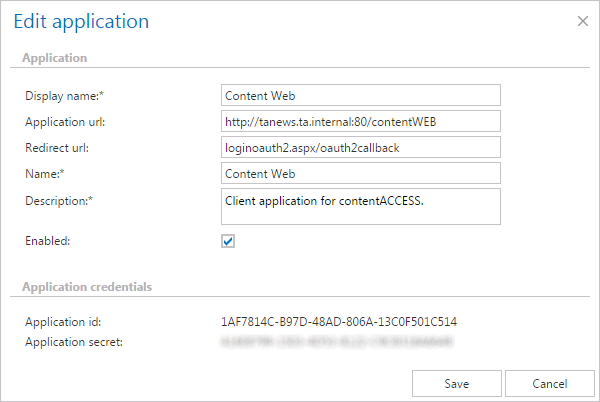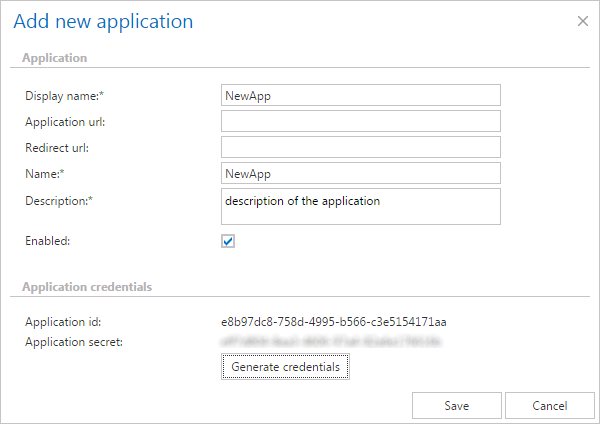17.Application settings
The list of the contentACCESS client applications is available for the system and/or tenant administrator on the Application settings page (System tab => Client applications group => Application settings button).

The settings of the client applications listed on this page can be managed using the given application’s context menu options:

The context menu options allow to:
- Delete the application – applications with “Is system” flag cannot be deleted.
- Edit the application settings – the user can change the application URL, modify the application name and description, enable/disable the given application (the disable option is not allowed in case of Central Administration, and the configuration of the Central login page URL is also disabled here – it can be changed on the System => Services => System page)..
If an application is disabled, then the user cannot login to this application on the central login page. E.g. if contentWEB is disabled, the contentWEB login option won’t be available on the central login page for the users, and nobody will be allowed to log in to the archive.

At first install of the product, the Application URL is written to the given application’s window by the contentACCESS setup. It is highly recommended to create an alias, and to use an FQDN form in the application URL, because using this URL the end user should be able to access the given application from everywhere (from home, from office etc.). By each update of the product the setup reads the application URL from the Application settings, i.e. from the settings specified in the Edit application window.
It is also possible to add new applications using the “+ new application” button on the same page. By clicking the option the “Add new application” dialog opens. Fill the fields, generate application credentials and add it to the list.

